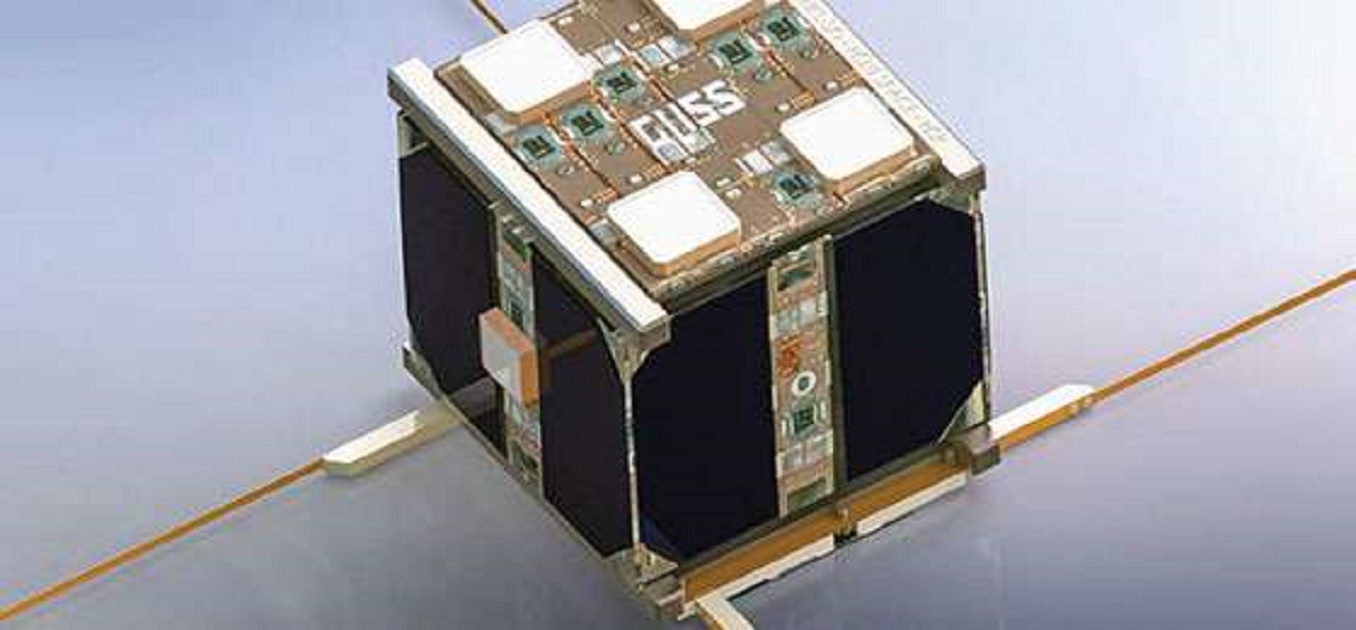Tokyo (SCCIJ) – The Swiss “new space” start-up ELSE is preparing to launch two demonstration nanosatellites in the last quarter of this year. They will be the first units of its planned 64-nanosatellite Machine-to-Machine global satellite network on a low-earth orbit. The goal of the network called AstroCast is to offer IoT (Internet of Things) satellite communication at the lowest cost in the industry. The AstroCast customers will be able to track and monitor their assets anywhere around the globe with miniaturized and inexpensive communication terminals. The data subscription plans to be offered are expected to cost only a few dollars per year for each device. In contrast to Switzerland’s upcoming commercial network, Japan is still in the phase where nanosatellites are launched by universities for research purposes only.
Partnership with European Space Agency
ELSE, the acronym for Elegant Systems Engineering, was created in September 2014 and is located in Lausanne, with an office in Portland (USA). Its team has been involved in the creation of Switzerland’s first satellite SwissCube, a so-called cubesat launched in 2009 that is still in orbit today. SwissCube was co-engineered by ELSE co-founder and Chief Executive Officer Fabien Jordan. Similar to SwissCube, ELSE will manufacture its nanosatellites in house.
ELSE was spun off École Polytechnique Fédérale de Lausanne (EPFL) after Jordan moved, in partnership with the European Space Agency (ESA), to commercialize the SwissCube technology for a satellite data communications network. The progress of the endeavor has been enormous: According to a report in “Via Satellite”, ELSE is now close to securing the necessary seed funding for the AstroCast system. It has raised already more than $4 million – with €2 million financial support coming from ESA – and needs only $1 million more.
The whole AstroCast network is supposed to cost less than $50 million with each of the 64 satellites for less than $500,000. Each satellite will be a cube with an edge length of about 10 centimeters, a weight of about 1 kilogram, a minimum bandwidth of one kilobyte per day and a lifetime of at least three to five years. As a result, the most expensive cost factor of the satellite network are the launch fees.
Already 1 million subscriptions
“Most of our customers will be systems integrators who will purchase our low-cost, miniaturized NanoLink terminal that can be integrated into any type of outdoor equipment, whether it’s fixed or mobile”, Jordan told Via Satellite. Customers would come from the automotive segment, maritime, heavy machinery, fleet monitoring and transportation of hazardous material. AstroCast has almost reached the 1 million subscriptions mark, the Swiss magazine Startupticker reported.
The first launch will be either on a SpaceX Falcon 9, or a Polar Satellite Launch Vehicle of the Indian Space Research Organization. Other options are new micro-launch companies, such as RocketLabs and Vector Space Systems. ELSE will launch its satellites in groupings of eight, with the second launch planned for 2019. It aims to drive the launch cadence up to two launches a year in 2020 and 2021.

University project as starting point
The development of nanosatellites in Switzerland originated from the CubETH project of the two top Swiss universities ETH Zurich and EPFL. They make satellites by using off-the-rack technology, the Swiss National Science Foundation reported. The researchers are currently examining whether chips mass-produced by the Swiss company U-Blox could be used in the satellites. They were already put in a vacuum chamber and radiated to examine their resistance to the hostile space conditions. According to SNSF, the chips will be tested in ELSE’s demonstration nanosatellites.
Japan’s universities have also developed and built their own nanosatellites over the last 15 years. The recent popular launch method has been to transport such devices in the Japanese transfer vehicle “Kounotori” to the International Space Station and release them from there. In December, seven Japanese nanosatellites were put into orbit this way. This reduces the launch costs for the universities. The space agency JAXA has also developed its own mini-rocket for nanosatellites, but the first launch recently failed. It will be repeated during the next twelve months.
Swiss structures for U.S. nanosatellites
There is no similar nanosatellite project like AstroCast in Japan, so Japanese companies who want to collect global data may have to turn to Switzerland’s network. There is a Japan financed nanosatellite maker, though: The U.S. company Oneweb has received funding of $1 billion by the Softbank Group and was merged in February with the satellite system operator Inmarsat.
Oneweb wants to put 648 nanosatellites in orbit by 2020 – with the help of Switzerland. The Swiss company Ruag has been chosen as the supplier of the structures for the satellites. Ruag Space USA, a supplier of spacecraft structural and thermal equipment, will build them in Florida.
“The aerospace industry is undergoing a disruptive transformation,” said Peter Guggenbach, CEO of RUAG Space USA. “In what’s known as the new space segment, innovative start-ups and private investors are developing new commercial business models for aerospace applications.”
Text: Martin Fritz for SCCIJ; Photos: AstroCast (top), Swiss National Science Foundation (below)





























